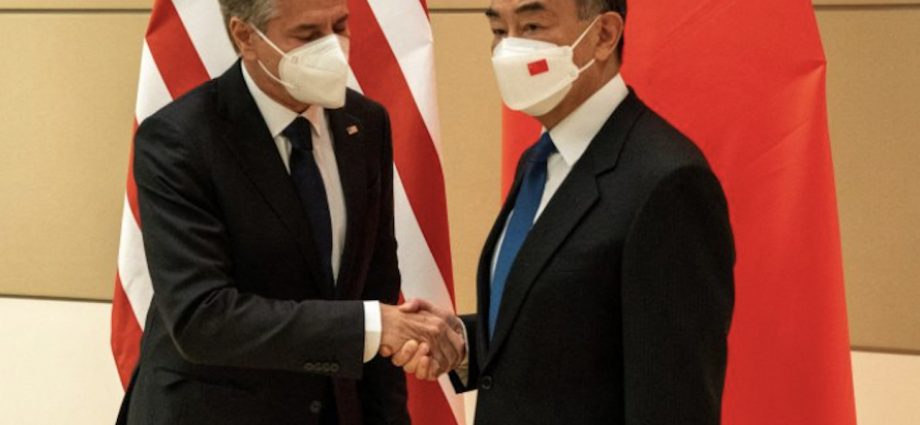On the eve of China’s next generation of leaders formally taking office for President Xi Jinping’s third term, set to start in early March, the Joe Biden administration has stepped up its efforts to engage the new leaders.
The latest among these was US Treasury Secretary Janet Yellen’s meeting with Chinese Vice Premier Liu He on January 18 in Switzerland to discuss the possible onset of a global recession that could see the United States default on its debt as early as this spring.
China holds nearly a trillion dollars of US debt in Treasury holdings, a very close second to Japan. An advanced team of US Treasury officials will be traveling to Beijing in early February to plan for Secretary Yellen’s visit to familiarize herself with China’s new leaders.
Biden’s presidential term so far has seen the pandemic and Ukraine war add new irritants to relations that were first driven down by the Trump administration’s trade and tech wars, which began soon after he took office in 2016.
US House Speaker Nancy Pelosi’s visit to Taiwan in August last year marked a new bilateral nadir. China responded by launching its biggest-ever military exercises in the Taiwan Strait and suspended most of its official interactions with the United States, stoking fears the world has entered a new cold war.
Icebreaking summit
President Joe Biden has held four online meetings with President Xi Jinping but none brought a breakthrough. Meanwhile, the pandemic and prolonged Ukraine war have further widened the gulf as a strengthening Russia-China axis creates new US-China fault lines.
Biden and Xi were able to turn the tide somewhat at their first face-to-face meeting at the Bali G20 summit last November. On the occasion, the two leaders agreed to “maintain open lines of communication” and revive their official interactions as early as possible.
In that direction, US Secretary of State Antony Blinken is scheduled to visit Beijing and meet his newly-appointed counterpart Qin Gang between February 5-6.
Qin was until recently China’s ambassador to Washington. Significantly, Blinken is following through with the meeting despite a massive surge of Covid cases in China that have opened a new rift in relations due to Washington’s restrictive response, which have added logistical challenges to the visit.
There is even speculation Blinken may be granted a meeting with President Xi, though this is still unconfirmed. Last month, Blinken’s State Department set up a dedicated Office of China Coordination, nicknamed the “China House”, to manage relations with Beijing.
This is arguably all part of the Biden administration’s attempt to stabilize relations with China and familiarize US officials with China’s new crop of leaders promoted during the 20th Party Congress last October.

They will formally take their respective offices following China’s 14th National People’s Congress endorsing their positions in a session scheduled to begin on March 5.
Reports suggest that Yellen could follow Blinken as the next US official to visit Beijing. On Wednesday (January 18), the US Treasury Department announced that Yellen also “looks forward to traveling to China and welcoming her counterparts to the United States in near future.”
Like Blinken, Yellen has also lots of bilateral knots to untie. The Biden administration has tightened trade and investment regulations on China while slapping punitive restrictions on technology transfers, including on advanced semiconductors and chip-making equipment, in the name of national security.
Successive US administrations have accused China of intellectual property theft including through forced technology transfers from American investors based in China.
Chinese checkers
US overtures to meet with China’s next-generation leaders make good diplomatic sense. What is intriguing is that most of these interactions are increasingly being initiated by Washington rather than Beijing. This dynamic arguably gives at least a tactical advantage to Chinese leaders in setting the tone and tenor of their interactions.
Recent years have also seen China becoming increasingly wary of any preconditions, redlines, or predefined agendas for such meetings, which it prefers to keep more open-ended. As such, China has been less inclined to accept US diplomatic invitations.
Most recently, Washington’s offer this month to hold deconfliction talks following an air encounter involving US and Chinese aircraft over the South China Sea via a phone call between US Defense Secretary Lloyd Austin and Chinese Defense Minister Wei Fenghe was declined by Beijing at perhaps the very last minute.
This should have been a standard communication under the two sides’ Military Maritime Consultative Agreement of 1998.

Likewise, it remains unclear whether Austin will soon discuss these matters with Li Shangfu, who is expected to take over as China’s next defense minister, any time soon. Li, promoted at the 20th Party Congress as a new member of China’s Central Military Commission, was the former head of its Equipment Development Department.
What may make matters complicated is that Li was sanctioned by the US in 2018 for China’s purchase of S-400 missiles from Russia.
The coming weeks will be critical to see whether this new wave of US diplomatic outreach will improve or further degrade their bilateral equations. While Washington appears to see hope for better ties under a new crop of Chinese leaders, it’s not yet clear that Beijing sees the situation similarly.
Follow Swaran Singh on Twitter @SwaranSinghJNU

